Upright Pianos
Full-Size Upright Piano
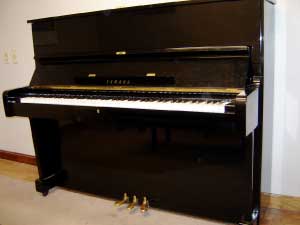
Of the vertical pianos, full-sized upright pianos, sometimes called "upright grands," have the fullest tone, strongest bass, and loudest volume. This is due to the longer strings, larger hammers and larger soundboard. Uprights are usually between 48 and 52 inches high.
At the beginning of the 20th century, the upright piano was exceedingly popular. The growing American middle class wanted to have music at home, and the phonograph and radio were yet to widely catch on. The favorite pastime was to gather around the piano in the evening and sing along to the Tinpan Alley sheet music hits of the day.
Most major cities had at one or two piano manufacturers, some cities had many. At that time there were over 100 piano makers in the U.S. alone.
Because so many were made during the early 20th century, there are still many available. Some may be in need of serious repair, or may not be worthy of the expense. Some good quality uprights from this era can be rebuilt to be better than any similar new pianos sold today.
Older uprights can be heavy, and difficult to move. If you are considering purchasing an older upright, it is a good idea to have a piano technician inspect the instrument first. Though some may be yours free for the taking, it still might not be worth the trouble.
Shown in the photo: the Yamaha U1, the world's most popular piano, with over one million distributed worldwide.
Studio Upright Piano
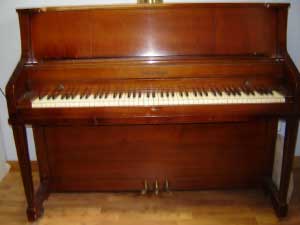
The studio upright is designed for institutions, schools, classrooms, professionals. Generally between 42 and 48 inches high, the studio upright piano is plain looking, without the frills of a piano designed for livingroom display.
Studio uprights are usually built to be quite sturdy to take the abuse of an institutional situation. These pianos can be a good value for a serious pianist looking for a piano with a small footprint. Most studio uprights tend to have pleasing tone, a sturdy action, and a more robust pin block, which translates into less frequent tunings.
Studio uprights are also usually easier to move, due to the better quality rollers on these pianos. The front legs are attached to the piano case and are sturdier than on console and spinet pianos.
Console Piano
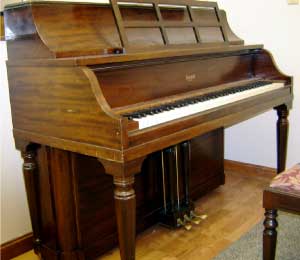
The console piano, usually between 39 and 43 inches high, has become the most popular piano for the home. Though it is smaller than the full-sized upright, a quality larger console is still capable of good tone.
Designed for home use, the console piano has a case that is designed to look like furniture. Usually, the console has front legs, which should be treated with care when the piano is moved.
The console has a "direct blow" action, meaning the key directly moves the action, without the connecting apparatus of the "abstract" or "sticker."
Spinet Piano
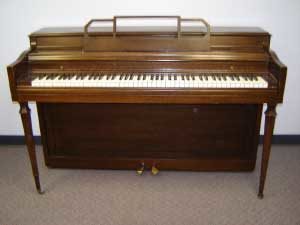
Of the upright pianos, the spinet is the shortest. This translates into the shortest strings, and smallest soundboard, which means the least quality tone, and the least volume. Spinet pianos tend to be between 34 and 40 inches high, and are designed for home use, usually with a furniture styling to the case.
To make the piano work with the shorter height, the spinet employs a "drop action" mechanism. This means the bulk of the moving parts are below the height of the keys. This translates into more moving parts, which can more difficult to repair.
Though there are many disadvantages to the spinet design, spinet pianos are still popular, mostly for their less imposing look in the modern home. Used spinets are available for $400 to $1500, sometimes more depending on brand and condition.
Start Playing Piano Today with the Piano Guide Quick Start Course!
Easy to follow step-by-step lessons designed for adult beginners. The next best thing to private lessons!
What You'll Learn:
- Notes on the piano/keyboard
- Proper fingering
- C major scale
- Chords
- How to read music
- And much more!
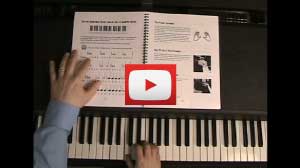
Video lessons - watch as I play everything for you.

